Whenever we talk of exercising, dieting, and all the other health and wellness pursuits out there, children rarely come up. Even though today’s parents take more interest in their children’s welfare than previous generations seemed to, few really know for sure what works best for kids. Can meditation and yoga, for example, offer any positive benefits to children?
There are benefits for children to do yoga practice and meditation – even more so than adults in many instances. They may experience positive results in areas such as strength, flexibility, sleep quality, mood regulation, stress management, concentration, self-esteem, anxiety relief, and more.
To be sure, one wouldn’t expect the types or intensities of yoga and meditation that would be suited to adults to be applied to children. But there are plenty of ways that these practices can help improve your child’s life quality. Read on and take a look for yourself.
What Yoga and Meditation Have in Common
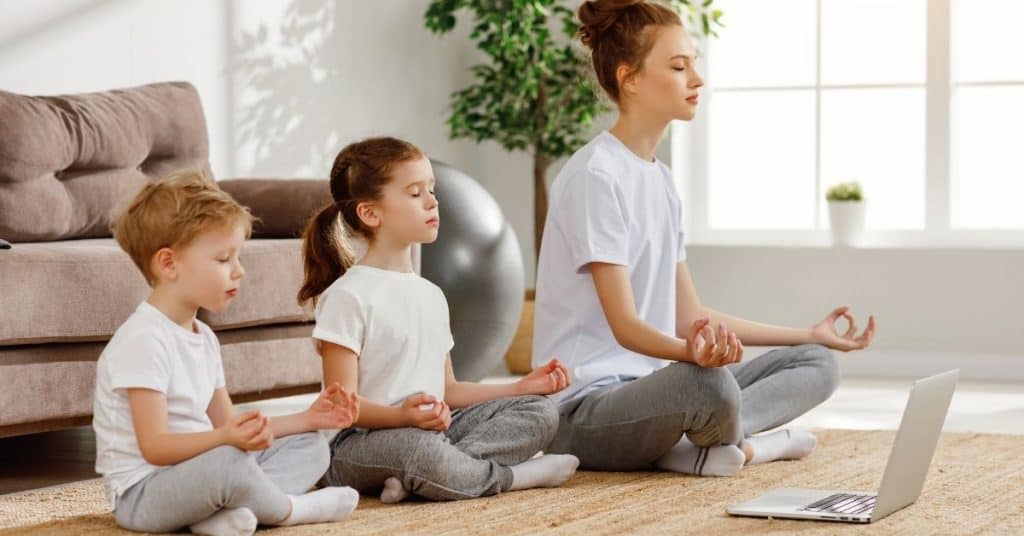
Simply stated, meditation is a habitual process of teaching your own mind to focus at will and redirect your thinking patterns. When practiced effectively, it allows for the release of negative thoughts and emotions while introducing and reinforcing positive ones.
Yoga refers to the wide range of physical, mental, and spiritual practices that originated in ancient India. Today, the Western world is more familiar with yoga’s physical aspects for most art, which include the postures (asanas) and breathing exercises (pranayama) that participants engage in. Even so, strong mental elements and hints of spirituality remain in many popular yoga types.
With these definitions in mind, it becomes readily apparent that the two disciplines are closely interlinked. In fact, yoga requires a large degree of concentration and looking inward, which is a large component of meditation, if not the whole of it. You can’t practice yoga effectively without meditation elements, even though you can successfully meditate while not doing yoga.
Children in this day and age are more prone to stressors than most of us might imagine. With school pressure, busy parents, video games, online life, competitive sports, social media, and the occasional pandemic here and there sometimes become a bit much for these growing persons to handle.
Yoga and meditation can effectively counteract the negative impacts of modern living, both physical and mental while cultivating and fostering positive traits and qualities in a child that will help them survive and thrive.
Of course, whether your child practices at a yoga class, at home, or school will all depend on your schedules, comfort levels, and general references. Teaching your child some of the moves you picked up in your class can be a very positive and rewarding shared experience for both of you.
Now, let’s get back to the subject at hand.
Increased Activity and Healthy Lifestyle Habits
Bad habits are hard to break, but we often forget that good habits can be just as stubborn and long-lived. When you involve a child in yoga from an early age, you will be encouraging them to live an active lifestyle, which will help them guard against the myriad problems that sedentary living brings with it.
Obesity, diabetes, heart disease, poor posture, back problems, and more might not seem like problems children should be worried about, but we’re looking at the future here. When you get them on the right track at an early age, their risk of falling prey to these ailments will be drastically reduced.
Besides, some problems such as obesity and diabetes continue to afflict more and more children across the United States and the world at large die to the high-fat, high-sugar, high-salt and no-nutrient diets subsist on in combination with overwhelmingly sedentary lifestyle habits.
Yoga goes hand-in-hand with meditation in increasing a person’s awareness of what goes on inside their bodies. A big part of this awareness is being watchful when it comes to the things we choose to put in our bodies. A child with a healthy view of their body will be less likely to overindulge unhealthy foods, much less happen to stray into alcohol or drug abuse.
To be sure, the factors that lead to destructive lifestyle choices are certainly varied and many times out of an individual’s control. Still, yoga and meditation can offer a child a better natural shield against some of these pitfalls.
Strength and Flexibility
Yoga is the fountain of youth since we’re only ever as young as our spines are flexible. Perhaps Bob Harper put it better when he said it first, but there couldn’t be a more suitable place to repeat his sentiment than in this post.
Strength is not commonly associated with yoga practice, but that’s only because most people don’t know very much about yoga and the various types it encompasses. In yoga types such as Ashtanga or Bikram yoga, the effects on the practitioner can be likened to those of a bodyweight trainer in terms of increased strength.
There are specific poses in the various yoga types that will build muscle and increase strength. In a study conducted in 2015, 173 people engaged in regular yoga practice consistently for 12 weeks. At the end of it, they reported increased stamina, strength, and flexibility and experienced weight loss.
The beauty of practicing yoga with strength in mind, even where children are concerned, is that they will never be lacing themselves at risk of overloading and possibly injuring themselves as can happen with free weights. Of course, care should be taken as some poses can be complicated, but a good teacher and a vigilant student combined make it extremely safe going.
Yoga is widely acknowledged to be the ultimate flexibility-enhancer out there today. Regular stretching exercises simply do not go as deep and as intensively into the joints and connective tissues, determining flexibility and joint ranges of motion.
Increased flexibility will help with effective participation in various other sports and activities, thereby not only making a child’s day-to-day life easier but giving them a bit of an edge when it gets to the playing fields.
Improved Motor Skills
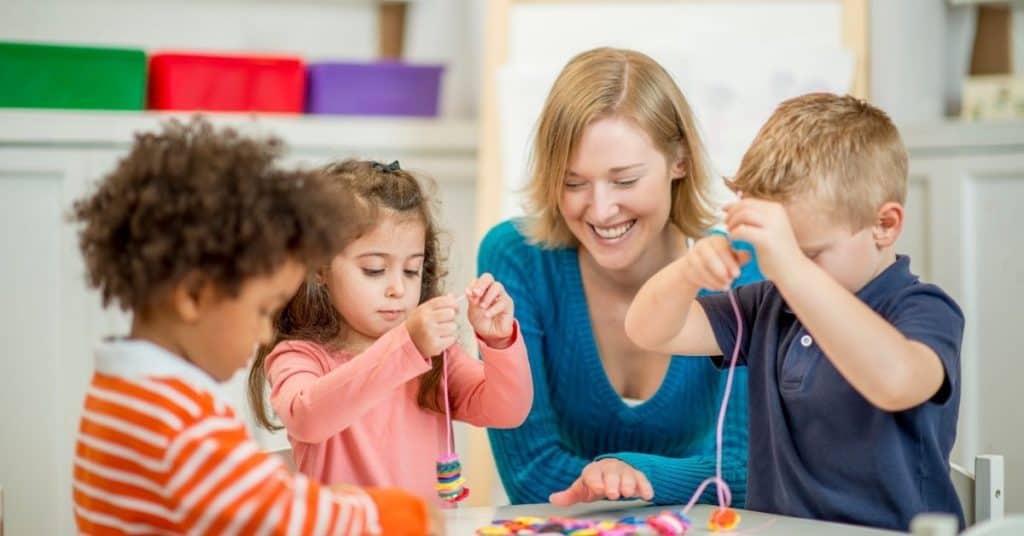
A person’s motor skills determine the ease with which they move their body in relation to the external environment. It involves such elements as balance, dexterity, hand-eye coordination, and more. Yoga has been shown through scientifically-conducted studies to be effective in improving a person’s motor skills.
A person or child practicing yoga each day for just fifteen to thirty minutes will enjoy a demonstrable increase in their gross and fine motor skills. Gross motor skills are useful in sorting activities, while fine motor skills are those we use to perform delicate operations such as threading a needle.
Growing children develop their motor skills as they grow up and become more accustomed to their body and how it fits into the world around them. That’s why little children can seem to be so clumsy. With yoga, this developmental aspect can be given a ready boost.
Better Sleep
For a growing child, a sound night’s sleep is absolutely essential for their proper development, as a significant number of body processes and repairs are carried on while they are asleep. Lack of sleep or poor-quality sleep has been shown to result in various negative outcomes, including moodiness, constant fatigue or lack of energy, inability to focus, irritability, susceptibility to infection, and disease.

Insomnia or the inability to fall asleep and related sleep disorders may be the result of many things, but some of the most common causes are anxiety, depression, and stress. Whether it is due to schoolwork, peer relations, or something else that has them feeling overwhelmed or panicky, when their bodies get tensed up in reaction to this, they will have trouble with their sleep.
Yoga practice and meditation make for great ways to enhance sleep quality and improve their ability to fall asleep quickly once they lay down at night. The physicality of yoga practice helps expel negative thoughts and emotions that are bearing their influence on the body. At the same time, the breathing and introspection that accompanies it serves to calm the mind and the nervous system.
It has also been demonstrated scientifically that yoga helps stimulate the production of melatonin in those who participate in it. Melatonin is an important hormone for human beings as it plays a vital role in regulating our sleeping and wakefulness schedules.
With kids, one should always look for other solutions before reaching for sleeping pills in case of sleep troubles. Yoga serves as a cheap, safe, and highly effective solution to the problem that comes with no side effects and has numerous positive effects besides.
Better Breathing and Asthma Relief
Inherent in the practice of yoga is a system of controlled breathing, referred to as pranayama. The techniques and exercises this entails are geared towards helping the yoga practitioner achieve higher inward focus by concentrating on their breathing and properly achieving the postures.

Various studies have been conducted on yoga in relation to a person’s breathing, with positive results being reported. One such study sought to measure the vital capacity of those who practiced yoga by having 287 students take yoga classes over the course of 15 weeks and compare their vital capacities at the end of the weeks against what they were at the beginning.
The results found that they had a significant increase in their vital capacities.
Now, vital capacity is basically a measure of how much air a person can blow out of their lungs. This is a significant breathing efficiency measure with very specific implications for those suffering from heart problems, lung disease, and asthma.
With children being the hardest hit demographic when it comes to asthmatic symptoms, yoga offers us a great way to help mitigate the effects of the condition. One study conducted in 2009 found that the breathing techniques taught as an art of yoga practice resulted in improved lung function and reduced asthmatic symptoms in patients diagnosed with mild or moderate asthma.
Yoga undoubtedly serves as a ready tool that children and adults alike can use to build up our endurance, enhance our performance, and keep our lungs and hearts generally healthy.
Relief From Anxiety and Stress

One of yoga’s initial claims to fame is its ability to help relieve stress and anxiety in those who practice it. The same can be said about a meditation in its own right.
With children, it may be all too easy to think that they do not need such tools. Still, most of us will recall feelings of anxiety and stress in our younger years, even if we had no idea how to express them or even properly identify them at those tender ages.
The Center for Disease Control and Prevention (CDC) places the percentage of children between the ages of 3 and 17 who suffer from diagnosed anxiety at 7.1% and those with diagnosed depression at 3.2%.
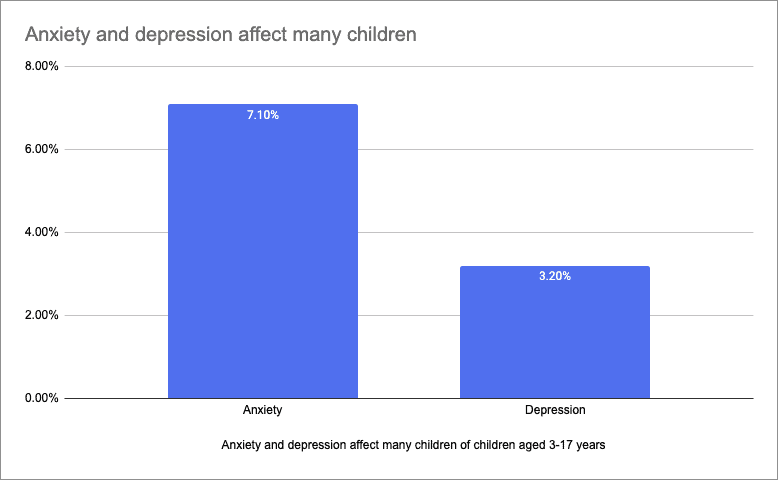
With that in mind, it makes perfect sense to have yoga become a part of your child’s life, as it will not only help them deal with anxiety and stress but might help keep them at bay entirely. So, how effective is yoga at promoting relaxation and alleviating stress?
The science behind it all bears us out. First of all, we have yoga’s effectiveness at helping reduce our body’s secretion of the hormone that goes by the name cortisol. There have been plenty of studies done to demonstrate this. This is what is released into our bloodstreams in reaction to fear, anxiety, pain, panic, and other unpleasantness. It is commonly referred to as the stress hormone.
Anxiety is also well met by yoga practice, as this large study managed to illustrate. In another study, patients diagnosed with anxiety disorders such as mild PTSD (Post-Traumatic Stress Disorder), which manifests itself as fear and anxiety in the wake of a traumatic event, were directed to participate in yoga classes twice every week for two months.
At the end of the two months, the participants who attended yoga sessions registered significantly lower anxiety levels than the control group, which did not participate in yoga sessions. It has to be said that even though the results are encouraging, scientists are not too sure exactly how yoga works to combat anxiety in those who practice it.
It is suspected that the presence of mind, search for inner peace and deliberate mindfulness that it cultivates in people is what works to produce its relaxing effectiveness.
Increased Cognitive Abilities
Another significant aspect in which yoga and meditation help children and adults alike is cognition or mental ability. Here we’re talking of such things as creativity, information retention, attention spans, concentration, memory, and more.
When taking part in yoga, one needs to pay close attention to their movements and how their breathing coordinates with these movements. One must also keep close attention to what is going on in their minds by focusing inwards, attaining a meditative state. The mind and the body will be fully engaged at the same time.
Some of the poses found in yoga, especially those calling for balancing and equipoise, call for particularly high concentration and body awareness levels. The degrees to which these abilities will be called into action will, of course, depend on the practitioner’s level of ability and skill. Still, even the youngest of beginners will experience some form of this.
The meditative aspects of yoga are also useful in increasing a person’s attention span as well as their ability to grasp new concepts well. In combination, these two qualities lead to a more curious and eager-to-learn child, which makes for the best kind of student. Academic success is a great boost to a child’s self-image and esteem, which translates to confidence and happiness – what every parent wants for their children.
When we have children take part in such activities, we’re essentially helping them practice or exercise their ability to focus on the task before them. These lessons translate in a very beneficial way to a growing child’s day-to-day life, who needs good cognitive functions to excel both in school and wider society.
Fosters Good Emotional Health, Mindfulness, and Self-Regulation
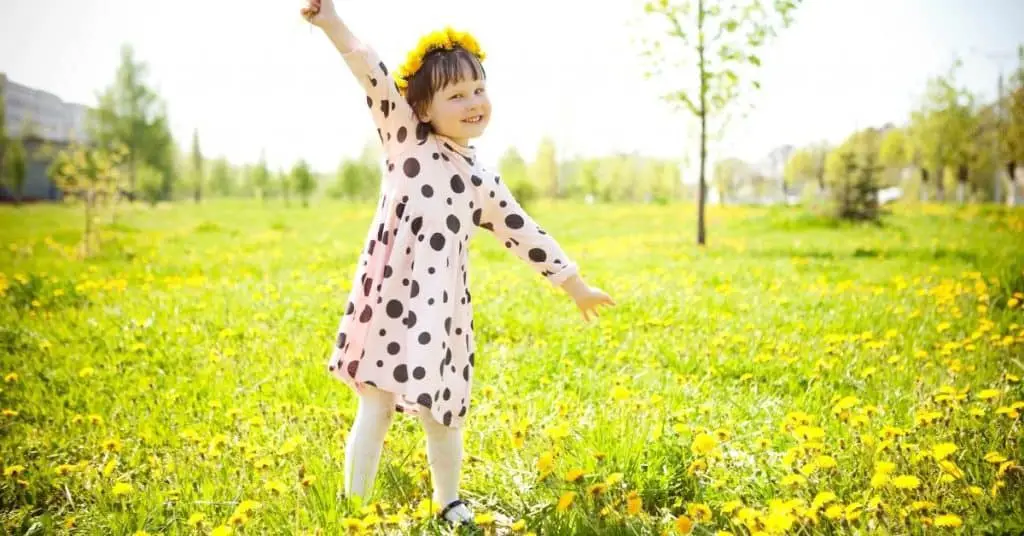
Children’s emotional well-being can be a delicate thing, and many times it is difficult for adults to notice when they are troubled or something is amiss. Yoga and meditation have a good track record in helping foster sound emotional health, such as was demonstrated in this review of studies dealing with depression.
Mindfulness refers to a general self-awareness, whereby a person can better observe and recognize what’s going on in their own heads. This means a better understanding of the impulses that cause one to behave in a certain way, and thus the ability to steer them towards actions with positive outcomes.
With this increase in self-understanding, it becomes easier to socialize in a healthy manner with those around us, which is an important aspect of a growing person’s life in general. For example, this study determined that people who made use of a meditation application to grow their mindfulness reported reduced feelings of loneliness and increased sociability.
Empathy is yet another emotional quality that yoga and meditation have been shown to be effective in cultivating or encouraging its practitioners. Empathy is a general kindness and compassion that one extends to others around them. This study review looked into 22 different studies on the effects of meditation and determined that people’s levels of compassion towards others were increased.
How this works is by first generating positive feelings towards oneself, which grows to become love and kindness towards others. Positive feelings to oneself can be termed as self-esteem, which many young people and children struggle with during their formative years.
Children participating in yoga demonstrate more understanding and patience towards their peers and empathize and listen more closely to what others have to say. One promising study, mentioned in Slate magazine, saw 400 elementary-level children subjected to 5 weeks of regular mindfulness sessions, after which teachers reported them being more focused, caring, and engaged in class activities.
We thus see that yoga and meditation can equip children with the tools to be happy and healthy, without regard to their socio-economic backgrounds. The children in the study were mostly from low-income households with a minority ethnic background.
Points of Caution
It has to be remembered that children are not the same as adults in many ways, both visible and invisible. Most children’s bones and connective tissues are not yet developed enough to handle the intensities reached in some types of yoga, such as Ashtanga and Bikram yoga.
One has to exercise good judgment as a parent to ensure the safety and well-being of your child. They might be enthusiastic about trying something new and more complicated, which is a good thing in itself, but you will need to be watchful, so they do not take on too much before they are ready.
A quick consultation with your yoga instructor about your child’s ability and age should give you a good idea of the types of poses and exercises that would suitably challenge them without becoming boring for them.
Yoga is not about perfection, but progress, so remind them that wherever they might be starting from, the goal is to always get a bit better each day. This will help them become patient and add to the reward of achieving a new pose or perfecting one as they progress in their yoga.
Yoga and Meditation for Children With Autism Spectrum Disorder
The specific ways that autism impacts children who suffer from it and those around them make yoga and meditation an ideal method of dealing with its symptoms. This is because, as we’ve seen in the list above, many of their challenges can be mitigated or entirely addressed through these interventions.
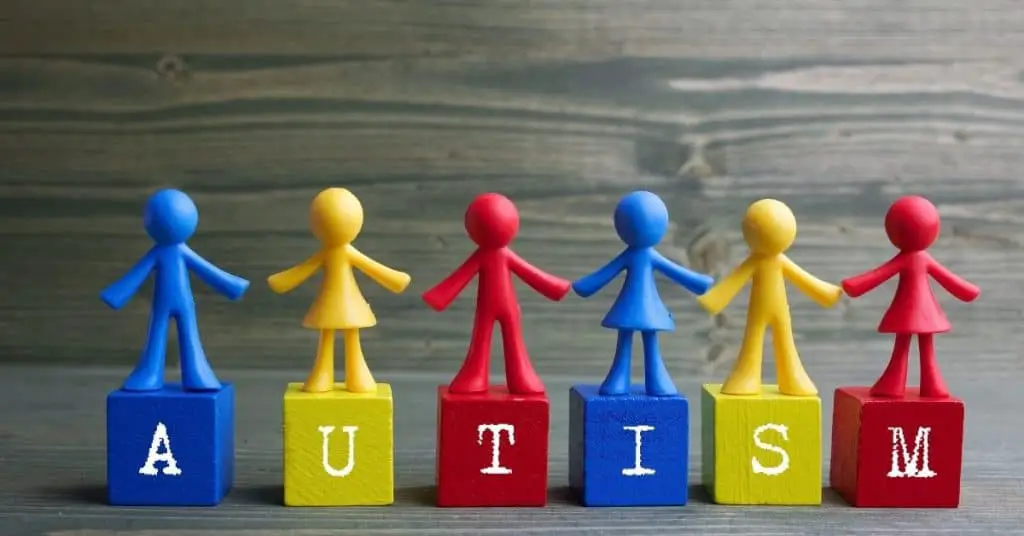
These young patients commonly present challenges in the realms of interpersonal communication, understanding social cues, sensory integration deficits, and heightened anxiety in many instances.
At a time when 1 in 68 children are being born with Autism Spectrum Disorder (ASD), many of the people involved in their care, including governments, healthcare professionals, and most importantly, parents, are increasingly looking towards yoga as a way of helping and supporting these children. Not many comprehensive studies have been conducted on the effects of yoga on children such as this one, but the indications so far have been positive.
Let’s touch briefly on the positive outcomes children with ASD might hope to experience through the practice of yoga and meditation.
Better Social and Communication Skills
A useful study published in the Journal of Yoga Therapy indicated that yoga resulted in an improvement in ASD-affected children’s imitation skills. Imitation being the father of learning, the researchers concluded that yoga might be an effective instrument in helping these children attain heightened cognition and interpersonal skills.
The study also showed improvements in non-verbal communication, sitting tolerance, eye contact skills, and receptive communication capabilities.
Better Awareness and Expression of Emotions
Aside from being able to discern and interpret social cues through yoga practice, children with ASD may also better understand what’s going on in their own hearts and minds. This will be coupled with exercises and breathing techniques that may help them channel any anxiety, anger, or frustration they might be experiencing in neither destructive nor inappropriate manner.
Reduction in Anxiety and Disruptive Behaviors
Disruptive or challenging behaviors are common in children with ASD owing to their difficulties in communication, socializing, and sensory integration. Sensory integration refers to a person’s ability to the way we process and make sense of stimuli from the world around us and from within ourselves.
According to this paper, when these faculties are not well developed, self-regulation becomes a problem for the patient, which affects their ability to control aggression and impulsivity. Another study gives reasonable credence to the belief that yoga helps children with ASD to not only manage their anxiety but to develop stronger self-regulation and coping skills.
Increased Self-Esteem
Children with ASD will often struggle with feelings of self-worth and identity, even if they cannot show these emotions in the usual ways. Yoga can be a great instrument in helping these children develop a stronger sense of self-worth and confidence.
When assuming poses that require power or balance, it is easy to help the child along by supporting them where necessary. The sense of achievement felt when the poses are achieved can go a long way in improving their mental outlook towards the world and towards themselves.
Asanas For Autism and Special Needs is a great book by Shawnee Thornton Hardy and gives us a good and useful guide on the types of asanas or postures suitable for children with ASD and other special needs. It breaks things down clearly so that everyone involved from parents to teachers to yoga instructors can make effective use of the postures described therein.
Final Thoughts
Yoga and meditation can be put to good use by parents and educators alike to ensure and help along with the children’s mental and physical well-being in our care. There are plenty of positive effects to be enjoyed from yoga and meditation, with little-to-no chance of ill effect or injury.
With a bit of care, children anywhere from the age of 4 years old can start doing basic yoga poses – it’s designed to accommodate everyone – from the 99-year -old grandma to the barely walking toddler. Be sure to take advantage of this effective, long-lasting, and universally available resource and enhance your child’s life. You will be enriching your own as well.
Sources
- Wikipedia: Yoga
- Yogajournal: Why Kids Need Yoga Too
- Healthline: Benefits of Meditation
- International Journal of Yoga: Yoga and Autism
Sitasyoga.com is a participant in the Amazon Services LLC Associates Program, an affiliate advertising program designed to provide a means for sites to earn advertising fees by advertising and linking to Amazon.com. We also participate in other affiliate programs which compensate us for referring traffic.





